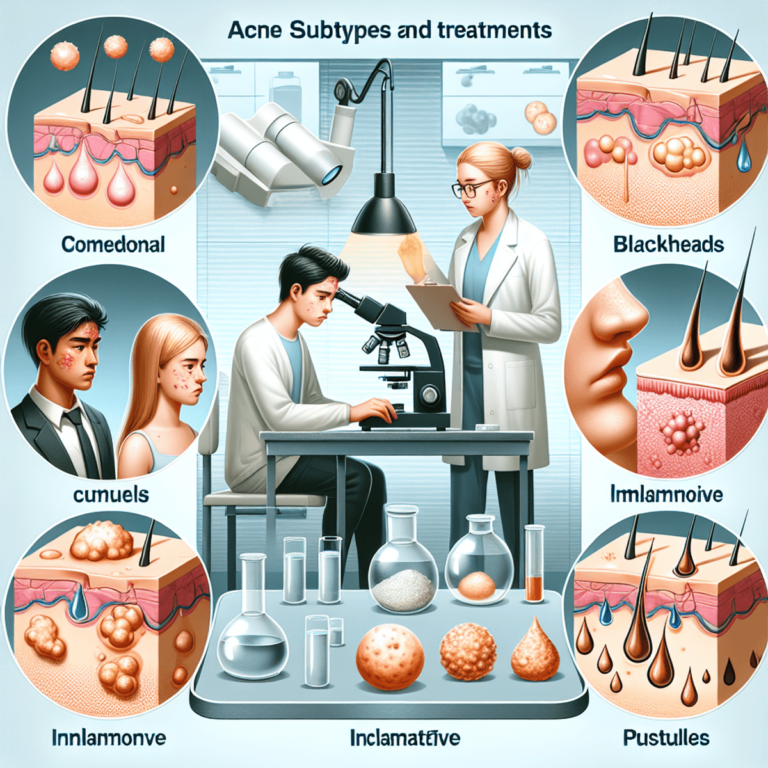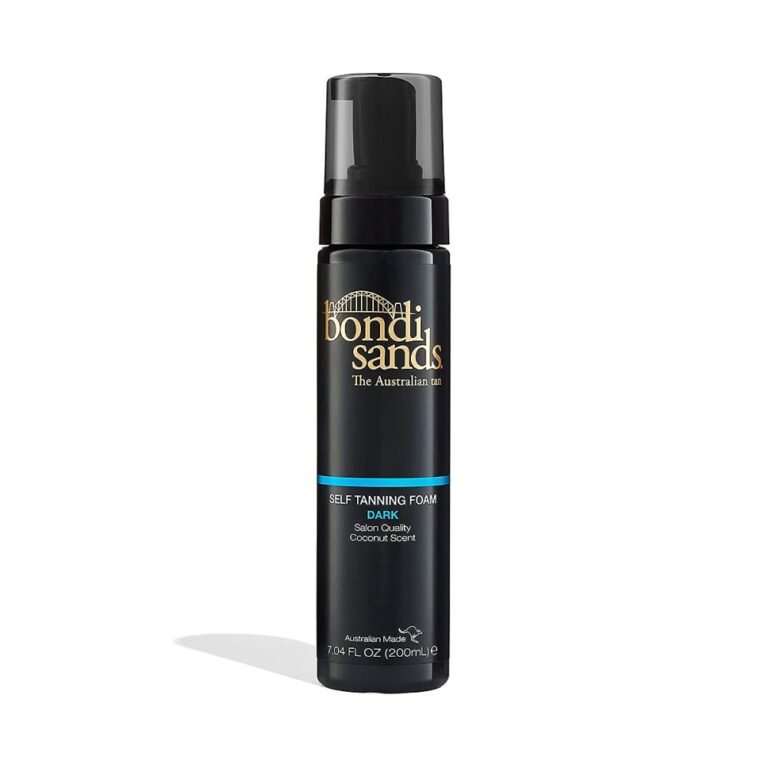How to Get Rid of a Blind Pimple

Introduction
A blind pimple is a type of pimple that forms beneath the surface of the skin. Unlike typical pimples, which are visible and have a whitehead or blackhead, blind pimples are not initially noticeable from a distance but can be felt by touch. They are often deep and painful, making them challenging to deal with effectively.
In this article, we aim to provide you with a comprehensive guide on how to get rid of blind pimples. We will explore various treatment options, including both home remedies and medical treatments that you can try. By understanding the causes and prevention strategies, you can take proactive steps to manage and minimize the occurrence of blind pimples.
Understanding Blind Pimples
Blind pimples are a type of acne that forms underneath the skin, making them not immediately noticeable from a distance but can be felt by touch. They are often referred to as “blind” due to their subcutaneous nature, causing them to lack a distinct head or opening. Unlike other types of pimples, such as whiteheads or blackheads, blind pimples do not have a visible protrusion on the skin’s surface, making them challenging to treat and often causing discomfort.
Unique Characteristics of Blind Pimples
- Subcutaneous Formation: Blind pimples develop deep within the skin when oil, dead skin cells, and bacteria become trapped within the pore.
- Pain and Sensitivity: These pimples can be sensitive to touch and may cause pain due to the inflammation occurring beneath the skin.
- Lack of Pus: Unlike traditional pimples that may contain pus, blind pimples typically do not have a visible head filled with pus.
Differentiation from Other Pimples
Blind pimples differ from other types of acne in several key ways:
- Surface Appearance: While conventional pimples have a visible presence on the skin’s surface, blind pimples remain hidden beneath the skin.
- Formation Mechanisms: The formation of blind pimples involves deeper layers of the skin and is often associated with more intense inflammation compared to other types of acne.
Understanding these unique characteristics and distinctions is crucial for effectively addressing and treating blind pimples. Additionally, recognizing the underlying causes and contributing factors to their development will further aid in devising targeted treatment strategies.
Causes of Blind Pimples
Blind pimples, also known as nodules, can be caused by a variety of factors that contribute to their development and severity. Understanding the underlying causes is essential for effectively managing and preventing these deep, painful blemishes.
1. Blocked Pores
One of the primary causes of blind pimples is the blockage of pores due to the accumulation of dead skin cells and sebum. When these substances become trapped within the hair follicles, they create an ideal environment for bacterial growth, leading to inflammation and the formation of blind pimples.
2. Excessive Sebum Production
Excessive sebum production by the oil glands can also contribute to the development of blind pimples. The overproduction of sebum can lead to clogged pores, providing a breeding ground for bacteria and triggering an inflammatory response in the surrounding tissue.
3. Bacterial Infection
Bacterial infection plays a significant role in exacerbating blind pimples. Propionibacterium acnes, a type of bacteria commonly found on the skin, can multiply within blocked pores, causing irritation and inflammation. This bacterial activity contributes to the characteristic redness and tenderness associated with blind pimples.
4. Inflammation
Inflammation is closely linked to the severity of blind pimples. As the body’s immune response reacts to bacteria and other irritants within the pores, it triggers swelling, redness, and pain. The extent of inflammation determines how uncomfortable and visible blind pimples are.
Understanding these causes provides valuable insights into effective prevention strategies and targeted treatments for managing blind pimples. By addressing these underlying factors, individuals can take proactive measures to minimize their occurrence and mitigate their impact on skin health.
Prevention and Skincare Tips
Blind pimples can be challenging to deal with, but there are effective prevention strategies to minimize the risk of experiencing them. Here are some essential tips to help you prevent blind pimples and maintain healthy skin:
- Wash Your Face Twice a Day: Regular cleansing helps remove excess oil, dirt, and impurities that can clog pores and contribute to the development of blind pimples.
- Avoid Scrubbing: Harsh scrubbing can irritate the skin and worsen inflammation, potentially triggering the formation of blind pimples. Opt for gentle cleansing methods to keep your skin clean without causing unnecessary irritation.
- Choose Non-comedogenic Products: Non-comedogenic skincare products are specifically formulated not to clog pores, reducing the likelihood of developing blind pimples. Look for this label when selecting cleansers, moisturizers, and makeup.
- Wash Pillowcases Regularly: Pillowcases can accumulate oil, sweat, and bacteria over time, which can transfer onto your skin as you sleep. Regularly washing your pillowcases helps minimize this risk and maintain a clean sleeping environment for your skin.
In addition to these preventive measures, it’s crucial to establish a proper skincare routine tailored to your skin type. This routine should include suitable product choices that support skin health without aggravating existing issues.
By incorporating these prevention and skincare tips into your daily routine, you can significantly reduce the likelihood of experiencing blind pimples while promoting overall skin health.
Home Remedies for Treating Blind Pimples
Blind pimples can be stubborn and painful, but there are several home remedies that can help alleviate their discomfort and promote healing. One effective home remedy for treating blind pimples is the use of warm compresses.
1. Warm Compresses
Using warm compresses is a simple yet powerful way to reduce inflammation and encourage blood circulation around the blind pimple. Here’s how you can use warm compresses effectively:
- Start by washing your hands to ensure cleanliness.
- Soak a clean washcloth in hot water, making sure it’s not too hot to avoid burning your skin.
- Gently wring out the excess water from the washcloth.
- Hold the warm compress against the affected area for 10-15 minutes.
- Repeat this process several times a day to help reduce swelling and promote healing.
The warmth from the compress helps to open up the pores, allowing any trapped sebum and bacteria to gently exit the skin. This can aid in reducing the size of the blind pimple and alleviate pain associated with inflammation.
Additionally, the improved blood circulation can facilitate the delivery of immune cells to the affected area, enhancing the body’s natural healing process.
By integrating warm compresses into your skincare routine, you can effectively manage blind pimples at home without resorting to harsh or invasive treatments. This gentle approach can also prevent further irritation or damage to the surrounding skin, promoting a quicker recovery.
2. Other Home Remedies and Treatments
In addition to warm compresses, there are other home remedies and treatments that can complement your efforts in addressing blind pimples effectively. These alternatives include:
- Acne patches: These adhesive patches contain ingredients like salicylic acid or tea tree oil that help draw out impurities from the pimple while protecting it from external irritants.
- Tea tree oil: Known for its antibacterial properties, tea tree oil can be applied topically to the blind pimple using a cotton swab. It may help reduce inflammation and kill bacteria.
- Raw honey: With its natural antibacterial and soothing properties, raw honey can be used as a spot treatment for blind pimples. Apply a small amount directly onto the pimple and leave it on for about 15 minutes before rinsing off.
Each of these options offers unique benefits in managing blind pimples. Depending on your preference and availability of ingredients, you can choose the remedy that suits you best.
Remember, consistency is key when using home remedies. Incorporate them into your skincare routine and give them time to work. If you don’t see any improvement or if the blind pimple worsens, it’s advisable to consult a dermatologist for further evaluation and guidance.
2. Acne Patches
While it’s best to avoid manipulating or squeezing blind pimples, there are several natural remedies that can help accelerate the healing process. Acne patches play a crucial role in creating an optimal healing environment for blind pimples. These patches are designed to adhere to the skin and provide a protective barrier, promoting faster recovery. Here’s what you need to know about using acne patches for treating blind pimples:
Application Process
- Cleanse the affected area gently to ensure it’s free from any dirt or oil.
- Carefully peel the acne patch from its backing and apply it directly onto the blind pimple.
- Press gently to ensure the patch adheres well to the skin.
Healing Benefits
- Acne patches create a moist environment that speeds up the natural healing process of blind pimples.
- They act as a physical barrier against external bacteria and pollutants, reducing the risk of further infection.
Reduced Inflammation
The patch can help reduce inflammation and redness associated with blind pimples, providing relief from discomfort.
Enhanced Absorption
Some acne patches are infused with ingredients like salicylic acid or hydrocolloid, which can help in drawing out impurities and promoting faster recovery.
Using acne patches as part of your home treatment for blind pimples can be an effective way to facilitate healing without resorting to harsh methods that could potentially aggravate the condition.
3. Tea Tree Oil
While it’s best to avoid manipulating or squeezing blind pimples, there are several natural remedies that can help accelerate the healing process. We will discuss the following home treatments in detail:
Tea tree oil is a popular natural remedy known for its antimicrobial and soothing properties. When used correctly, it can be a safe and effective option for treating blind pimples. Here are some key points to consider when using tea tree oil for blind pimple treatment:
- Antimicrobial Properties: Tea tree oil possesses powerful antimicrobial properties, which can help combat the bacteria responsible for exacerbating blind pimples. Its ability to reduce bacterial activity may aid in minimizing inflammation and promoting healing.
- Soothing Effect: The application of tea tree oil may provide a soothing effect on the affected area, potentially reducing discomfort associated with blind pimples. Its gentle nature makes it a favorable option for individuals seeking natural remedies.
- Cautionary Measures: While tea tree oil can offer benefits in managing blind pimples, it’s essential to dilute it properly before application to avoid skin irritation or allergic reactions. A patch test on a small area of skin can help assess individual sensitivity to the oil.
When using tea tree oil as part of your blind pimple treatment, consider the following steps:
- Dilution: Mix a small amount of tea tree oil with a carrier oil, such as coconut oil or jojoba oil, to reduce its potency and minimize the risk of skin irritation.
- Spot Application: Using a clean cotton swab, apply the diluted tea tree oil directly onto the blind pimple. Avoid applying it to the surrounding skin to prevent unnecessary dryness or irritation.
- Consistent Application: Repeat this process 1-2 times daily until you observe improvement in the blind pimple’s condition. Be mindful of any adverse reactions and discontinue use if irritation occurs.
By incorporating tea tree oil into your skincare routine with care and attention, you may experience its potential benefits in addressing blind pimples effectively without resorting to aggressive measures that could worsen the condition.
Remember that while home remedies like tea tree oil can be beneficial, it’s important to seek professional advice if you experience persistent or severe issues with blind pimples. Consulting a dermatologist can provide personalized guidance tailored to your specific skincare needs.
4. Raw Honey
While it’s best to avoid manipulating or squeezing blind pimples, there are several natural remedies that can help accelerate the healing process. One such remedy is raw honey, which has been used for centuries for its antibacterial and anti-inflammatory properties. Here, we will discuss the potential benefits of using raw honey as a natural antiseptic on blind pimples and how to apply it correctly.
Benefits of Raw Honey for Blind Pimples
Raw honey is rich in enzymes, antioxidants, and minerals that can help soothe and heal the skin. When applied to blind pimples, raw honey can:
- Fight bacteria: Raw honey contains hydrogen peroxide, which has antibacterial properties that can help kill the bacteria causing the pimple.
- Reduce inflammation: The anti-inflammatory properties of raw honey can help reduce redness and swelling associated with blind pimples.
- Promote healing: Raw honey can aid in the healing process by moisturizing the skin and supporting tissue regeneration.
How to Apply Raw Honey on Blind Pimples
To effectively use raw honey as a treatment for blind pimples, follow these steps:
- Choose high-quality raw honey: Look for organic, unprocessed honey that hasn’t been heated or filtered to ensure it retains its beneficial properties.
- Cleanse your face: Start by cleansing your face with a gentle cleanser to remove any dirt or impurities.
- Apply a thin layer of raw honey: Take a small amount of raw honey and apply it directly to the blind pimple using clean fingertips or a cotton swab.
- Leave it on overnight: Allow the raw honey to sit on the pimple overnight or for at least 30 minutes before rinsing it off.
- Rinse off with warm water: In the morning or after the recommended time, gently rinse off the honey with lukewarm water.
- Moisturize: Finish by applying a light, oil-free moisturizer to keep the skin hydrated.
Precautions and Considerations
While raw honey can be beneficial for blind pimple treatment, it may not be suitable for everyone. Consider the following precautions:
- Patch test: Before applying raw honey to your entire face, perform a patch test on a small area of skin to check for any allergic reactions or sensitivity.
- Avoid if allergic to bees: If you have a known allergy to bees or bee products, including honey, it’s best to avoid using raw honey as a treatment.
- Consult a dermatologist: If your blind pimples persist or worsen despite using home remedies like raw honey, it’s recommended to consult a dermatologist for further evaluation and treatment options.
Remember that individual results may vary when using natural remedies like raw honey. It’s important to be consistent with your chosen treatments and give them time to work. If you’re unsure about using raw honey or want personalized advice, consult a dermatologist who can provide guidance tailored to your specific needs.
Medical Treatments for Blind Pimples
When it comes to dealing with blind pimples, medical treatments can offer effective solutions to manage and alleviate the symptoms. These treatments are typically prescribed by dermatologists and aim to target the root causes of blind pimples. Let’s explore the common medical treatments for blind pimples:
1. Prescription Medications
Prescription medications play a crucial role in addressing blind pimples, particularly in cases where home remedies may not provide sufficient relief. Dermatologists often recommend the following types of prescription drugs for managing blind pimples:
- Topical Retinoids: These prescription-strength medications contain retinoids, which are derivatives of vitamin A. They work by promoting skin cell turnover and preventing the clogging of pores, ultimately reducing the formation of blind pimples.
- Oral Antibiotics: In certain instances, dermatologists may prescribe oral antibiotics to combat the bacterial infection underlying blind pimples. Antibiotics can help reduce inflammation and prevent further breakouts by targeting the bacteria responsible for exacerbating the condition.
It’s important to note that these prescription medications should be used under the guidance of a qualified healthcare professional, as they may have specific application instructions and potential side effects that need to be carefully considered.
Utilizing prescription medications for blind pimples can offer targeted interventions that address the underlying factors contributing to their formation. By consulting a dermatologist, individuals can receive personalized treatment plans tailored to their unique skincare needs.
In summary, prescription medications represent a valuable approach to managing blind pimples, providing targeted relief and addressing the root causes of this challenging skin condition. Seeking professional guidance from a dermatologist can ensure that individuals receive safe and effective treatment options tailored to their specific skin concerns.
Through a combination of home remedies and medical interventions, individuals can proactively address blind pimples and work towards achieving clearer, healthier skin.
2. In-Office Procedures
When home remedies are not sufficient, seeking professional medical assistance may be necessary. We will explore the following treatment options:
Cortisone Injections
Dermatologists can administer cortisone injections to reduce inflammation and promote rapid healing of blind pimples. This in-office procedure involves injecting a diluted corticosteroid directly into the pimple, leading to significant improvement within a day or two.
Manual Extraction
For stubborn blind pimples, dermatologists may perform manual extraction using specialized tools to carefully remove the trapped sebum and bacteria. This procedure should only be conducted by a trained professional to avoid potential scarring or further skin irritation.
These in-office procedures offer targeted solutions for persistent or particularly painful blind pimples, providing swift relief and preventing potential complications. Consulting a dermatologist can ensure the most suitable approach for addressing your specific concerns effectively.
Conclusion
Dealing with blind pimples can be frustrating, but with the right approach, you can effectively get rid of them. It’s important to be consistent with your chosen treatments and have realistic expectations, as it may take time to fully eliminate blind pimples. Remember to embrace a holistic approach that includes both preventive measures and targeted interventions.
Here are some final words on dealing with blind pimples:
- Stay consistent: Whether you’re using home remedies or medical treatments, consistency is key. Give your chosen treatment time to work before switching to another option.
- Prevention is key: While treating existing blind pimples is important, preventing new ones from forming is equally crucial. Follow a proper skincare routine that includes gentle cleansing methods and suitable product choices. Wash your face twice a day, avoid scrubbing, use non-comedogenic products, and wash your pillowcases regularly.
- Consult a dermatologist: If you’re struggling with persistent blind pimples or if they’re causing significant discomfort or scarring, it’s best to seek advice from a dermatologist. They can devise a personalized plan to address your specific needs effectively.
In conclusion, getting rid of blind pimples requires patience and a multi-faceted approach. By combining preventive measures with targeted treatments, you can minimize the occurrence of blind pimples and achieve clear skin. Don’t get discouraged along the way – remember that everyone’s skin is different and what works for one person may not work for another. Stay committed to finding the right solution for you and consult a dermatologist if needed. With time and persistence, you can conquer blind pimples and enjoy healthy, blemish-free skin.










